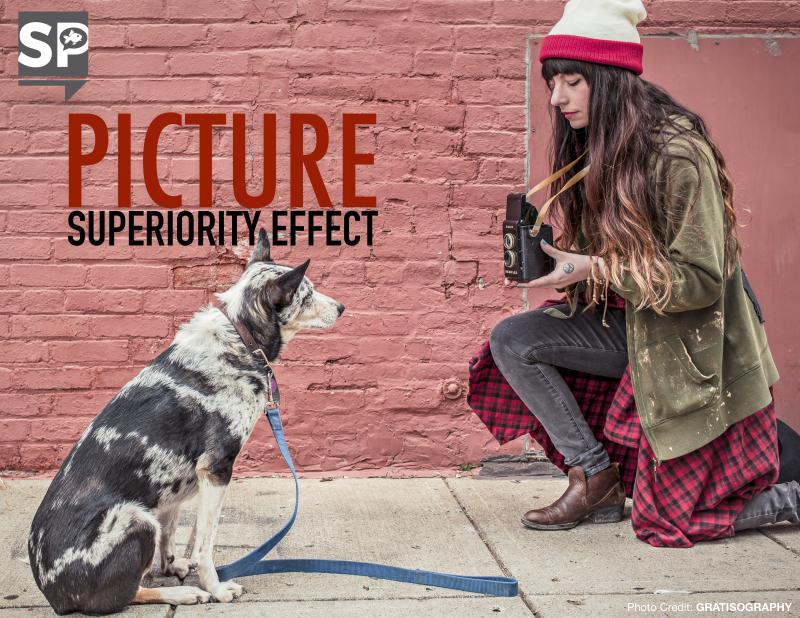Should you use images when you present? I use copious amounts when I deliver keynotes and workshops. Fellow speaker Todd Dewett, PhD uses zero. Is there a correct way? As with most things in life… it depends.
I’ll make the case for using images. The biggest reason is memorability. When you present, the goal should be that your message comes across “loud” and “clear” for your audience. Is the message shared in a way that’s remember-able? It turns out that our ability to recall a message is enhanced by up to 650% when we use visuals. Why such a big bump? It’s because of a phenomenon called the Picture Superiority Effect.
The picture superiority effect refers to the fact that pictures and images are more likely to be remembered than just words alone. It is based on the notion that “human memory is extremely sensitive to the symbolic modality of presentation of event information.” It’s called dual-coding. Using both creates verbal and image codes, whereas word stimuli only generate a verbal code.
Hear something… 3 days later recall is 10%
Hear something and add image… 3 days later recall is upwards of 65% (Here’s the video)
So, should you use images when present? IMHO, only if you want them to remember your message or call to action.
Follow me on Twitter or LinkedIn.

Stan Phelps walks the walk. He stands out in the sea of sameness by modeling his own Differentiated Experience (DX) message: Differentiation isn’t just about what you say, it’s about what you do and, more importantly, how and why you do it. Stan leverages his unique collection of 5,000+ case studies on customer, employee, and brand experience to engage audiences with informative learning-based experiences. He believes purposeful DX wins the hearts of employees and customers, and differentiation ultimately boosts loyalty, retention, referrals, and results.
Find Stan’s in-person and virtual keynotes, workshops, and Goldfish tank programs at StanPhelps.com.

